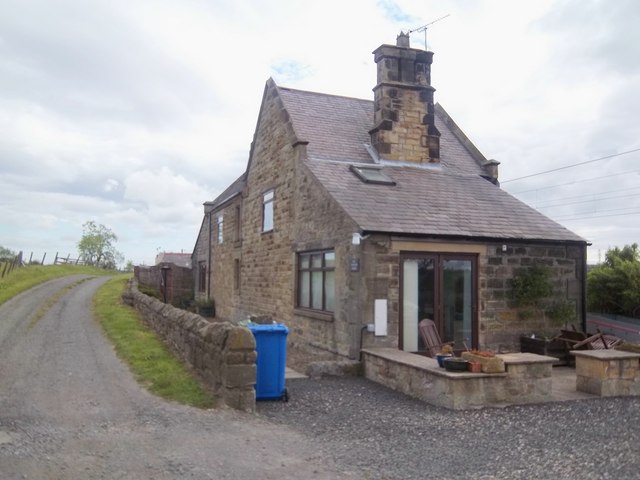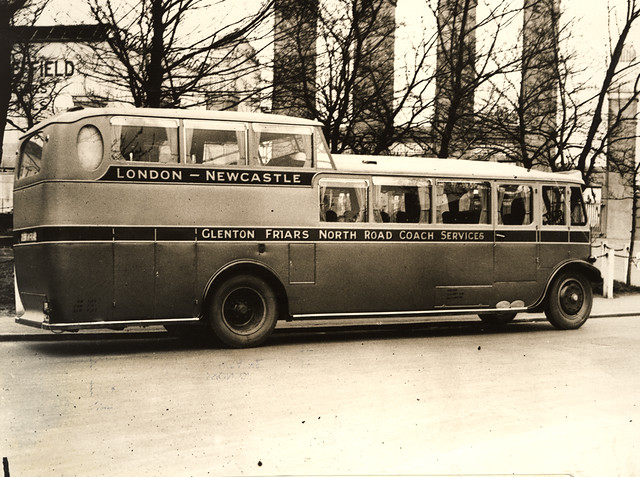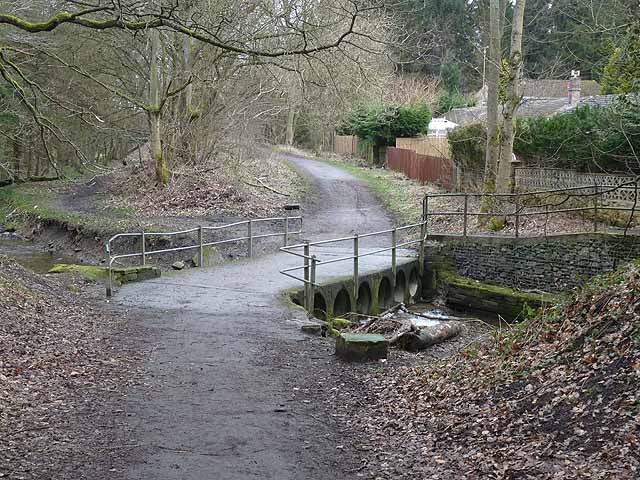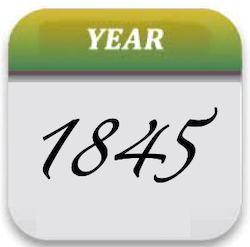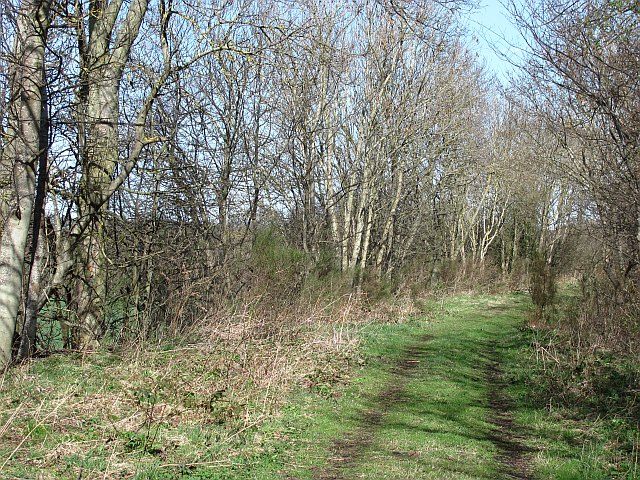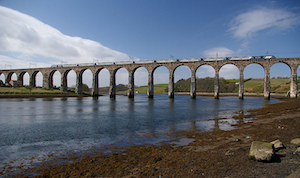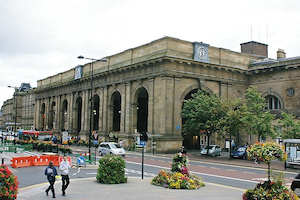Topics > Transport and Travel > Railway > Newcastle and Berwick Railway
Newcastle and Berwick Railway
First proposals
In the first decades of the nineteenth century, attention turned to the possibility of a railway connection between the developing railways of England, and central Scotland. The topography of the region presented obstacles: the Cheviot Hills stood in the direct line between Newcastle and Edinburgh, and a more gentle course following the low-lying coastal strip appeared to be unreasonably circuitous. Crossing the River Tyne and serving Newcastle while avoiding interference with urban areas was also difficult. Viewed from Scotland it was by no means obvious that a connection to England had to pass through Newcastle, although any western route, through Carlisle, faced equally difficult terrain in the Scottish Southern Uplands.
On 1 March 1839 plans were deposited for a Great North British Railway from Newcastle to Edinburgh. The English part of the route had been designed by George Stephenson, and the Scottish end by the established Scottish railway engineers Thomas Grainger and John Miller. The Great North British Railway did not proceed to being authorised; the money market was not amenable to financing the scheme at the time. At the Scottish end, huge public debate was generated about the route from central Scotland to what was becoming the English network. For some time it was taken for granted that only one route was viable, and numerous schemes, many of doubtful practicality, were put forward. (Some of the proposals would build a direct route across mountainous terrain, with steep gradients and prodigiously long tunnels.) A Government commission, referred to as the Smith-Barlow Commission, was set up to determine the best route, but its slow deliberation and indecisive conclusion encouraged promoters to disregard it.
George Hudson was developing the network based on the York and North Midland Railway (Y&NMR) and the Great North of England Railway, to reach Gateshead. Meanwhile, Scottish interests had decided that a line from Edinburgh to Berwick could be financed, and in 1843 a provisional North British Railway was formed. George Hudson agreed to subscribe £50,000 through the Y&NMR. He saw that if he built a line from Newcastle to Berwick, he could gain control of the North British Railway and thereby control the entire route connecting York and Edinburgh.
So was created the proposals for the Newcastle and Berwick Railway. North of Alnmouth the proposed route intersected part of the lands owned by Earl Grey; he had been Prime Minister but now was retired. He decided he would not accept the interference with his lands, and his son Viscount Howick took up the fight to protect the estate. A deviation was put forward by him to put the railway out of sight of the residence, but it would have substantially increased the cost of construction, and Stephenson, and later Hudson, attempted to negotiate acceptance of the original route.
Howick remained implacably opposed to the routing of the railway, and the promoters of the N&BR line decided to go ahead with their original route, on the basis that Parliament was now unsympathetic to obstruction of large projects beneficial to the public interest, on purely personal grounds.
When Viscount Howick became persuaded that his objections to the Newcastle and Berwick Bill in Parliament were unlikely to prevail, he instead proposed a rival line, the Northumberland Railway, which would pass clear of the estate, to the west. Isambard Kingdom Brunel was engaged to engineer the line, and he decided to adopt the atmospheric system. This involved the laying of a tube between the rails; a partial vacuum was created in the tube by static pumping stations, and each train was headed by a "piston carriage" which carried a piston running in the tube. A leather flap sealed the necessary slot in the tube before and after passage of the train. The atmospheric system avoided the weight of a locomotive and its fuel and water in the train formation, and was in use without apparent difficulty on the Dalkey Atmospheric Railway.
The relevant railways connecting with the proposed Newcastle and Berwick Railway reached Gateshead, on the south bank of the Tyne, and it was necessary to cross the Tyne by a bridge. For some time it was not clear that the bridge needed to be in Newcastle itself, but as part of the process of gaining support (and of reducing the attractiveness of Howick's Northumberland Railway) Hudson agreed on the crossing at what became the High Level Bridge and a general, "Central" station in Newcastle. These works would cost about a third of the total cost of building the railway. Some saving was made by the agreement to purchase the Newcastle and North Shields Railway, which had a Newcastle terminus at Carliol Square (close to the present-day Manors station, but immediately west of the A167(M) viaduct) and using that company's line as far as Heaton.
Morpeth had hitherto been placed on a branch in the planned route, due to the topographical difficulties there, but as part of the matter of gaining support for the N&BR line, the route was changed to run through Morpeth, at the expense of the sharp reverse curve there. The people of Alnwick too wanted to be on the main line, but the difficulty of achieving that prevented it, and Alnwick was relegated to a branch line.
In May 1845 the House of Lords Committee considered the Newcastle and Berwick Railway proposal and the Northumberland Railway scheme. The atmospheric principle was still a proposal for use on the South Devon Railway and the fatal operational problems which caused its removal after much expenditure on that line were still in the future.
The supposed attractiveness of the Northumberland Railway scheme was weakened by its being proposed as a single line only, nonetheless costing considerably more than the double track N&BR line. Estimation of expected traffic volumes was fairly sophisticated by this time, and attention was drawn to the limited capacity to handle the anticipated demand, especially for goods trains. Moreover, the Northumberland Railway was not planning to make connections with other railways in Newcastle and Gateshead, whereas the N&BR scheme had committed to building the High Level Bridge.
During the hearings it became increasingly obvious that the Northumberland Railway Bill was going to fail, and its promoters withdrew it. The Newcastle and Berwick Railway obtained its authorising Act of Parliament on 31 July 1845,
The authorised capital was £1.4 million. Branches were included in the authorisation, to Blyth, Alnwick, Kelso, Warkworth, and adoption of the Newcastle and North Shields Railway.
Constructing the N&BR
The first hurdle had been passed: the line was authorised. The Newcastle and North Shields Railway was to be acquired, so no construction was necessary from their Newcastle terminus at Carliol Square to Heaton. From there the line was to be in open country and contracts were swiftly let. However, there were several significant structures to be built on these sections, requiring viaducts at Plessy over the River Blyth, north of Morpeth over the River Wansbeck, over the River Coquet south of Warkworth, and crossing the River Aln.
Extensive use of temporary wooden structures was made to advance the date of opening of the line, while construction of the permanent structures continued underneath.
The section from Heaton Junction (on the North Shields line) to Morpeth, (), was opened on 1 March 1847, and on 29 March the northern section from (south of the Tweed near Berwick) to , (), was opened. Four passenger trains ran each way every weekday between Newcastle and Morpeth, and between Chathill and Tweedmouth. Road coaches filled in the gaps for the time being, and a four-hour transit from Newcastle to Berwick was achieved.
The central section between Morpeth and Chathill posed some engineering challenges. There was a moss at Chevington which proved difficult to build over, and a high embankment near Chevington was unstable during construction. The Board of Trade Inspecting Officer visited on 14 to 17 June 1847, but the works were still incomplete; he permitted opening on 1 July 1847 on the basis that the company would complete construction by then, and the central section duly opened on that date.
More challenging was the crossing of the River Tyne and the River Tweed, and that work was to take much longer.
Newcastle and North Shields Railway
The Newcastle and Berwick Railway acquired the Newcastle and North Shields Railway (N&NSR), and used its line between the Newcastle terminus and Heaton.
The N&NSR had received the Royal Assent on 21 June 1836. The line opened on 18 June 1839, when two trains carried a total of 700 passengers on a return trip, followed by a celebration, which was interrupted by a violent thunderstorm that flooded the marquee. Public services started the next day.
Its Newcastle terminus was at Carliol Square on the north east side of the city centre; the North Shields station was known as Shields at first.
In the first six months, the railway carried over 337,000 passengers. Twenty services a day were provided, taking an average of 21 minutes for the journey and in 1841 the average speed of express trains was .
In constructing the line deep valleys at the Ouse Burn and Willington Dene had to be crossed. Laminated timber arch superstructures on stone piers were used, a configuration known after its creator as the Wiebeking system. They were desiged by John and Benjamin Green. The Ouseburn Viaduct consisted of five spans of 116 feet and 32 ft 6in rise. The Willington Viaduct had seven spans of up to 128 feet span. The timber arches consisted of 14 layers of timber, each 22 inches by 3 1/2 inches, held by trenails. Both structures were replaced by iron viaducts in 1869.
The railway was absorbed by the Newcastle & Berwick Railway in November 1844. It was extended to Tynemouth on 29 March 1847, and independent operation continued until the line north to opened from a junction from on 1 July 1847.
The High Level Bridge
A major engineering challenge for the new company was the crossing of the River Tyne. In the period immediately prior to the authorisation of the N&BR it was by means obvious where the crossing would be. A significant alternative was at Bill Quay, about two miles downstream from the actual High Level Bridge location, which would have left Greenesfield station, Gateshead, as the central station for the conurbation. An alternative had been a combined rail and road bridge upstream.
The N&BR Act absolved the Newcastle and Darlington Junction Railway from a commitment it had earlier made to build such a bridge, on condition that the company paid the N&BR £100,000 toward the construction cost. Robert Stephenson selected the double-deck configuration to carry a roadway as well as the railway in preference to a side-by-side solution simply on the ground of thE complexity of the pier foundations, as it was known that finding a hard bottom in the river was going to be difficult. A masonry structure was ruled out for similar reasons, and cast iron bowstring arches were adopted. The tied arch design eliminates thrust at the abutments and piers. To avoid a clearance problem, the road deck was suspended below the arch ribs on hangers, an idea put forward by George Leather, 1787–1870, a Leeds engineer.
Acquisition of the land required for the bridge, including the approach viaducts, amounted to £135,000, over a quarter of the cost of the bridge construction.
On 11 August 1849 Captain Laffan, Inspecting Officer of the Board of Trade, inspected the bridge; there was a load test although only the eastern track had been laid. Laffan approved the bridge and the first passenger train crossed it on 15 August 1849.
Trains had been passed across a temporary structure, as explained by Fletcher:
The first train passed along the temporary bridge used in the erection of the High Level Bridge on the 29th August, 1848, and afterwards over the magnificent arch which spans Dean Street. The last key on the High Level Bridge was driven by Mr. Hawks on 7th June, 1849; it was opened without any ceremony on August 14th, but was not brought into ordinary use until the following February.
Cook and Hoole say that the temporary structure for the High Level Bridge and the approach viaducts was opened on 1 September 1848, and that the permanent bridge opened on 15 August 1849.
The railway deck was wide enough for three tracks:
The bridge is wide enough for three lines of rails on account of the width required for the roadway and footpaths underneath, but only two lines were laid on the top; afterwards a third line was added, and regularly used as a siding, with a dead-end at the Gateshead end. This was in use for many years until converted into a third running line. In an illustration by Leitch, four lines are shewn on the bridge. This shews how little an artist's sketch can be relied upon as an historical data.
Crossing the River Tweed
The contract for the Tweed crossing was not let as quickly as expected, and the foundation stone was only laid on 15 May 1847. Robert Stephenson designed the structure. It has 28 arches of 61 ft 6in span, with the rails 120 feet above the river. The viaduct is on a curve. The arches have brick soffits and the pier faces are of masonry.
Although the permanent Tweed bridge had originally been scheduled for completion in July 1849, it actually first opened to goods traffic on 20 July 1850, and was formally opened on 29 August 1850. A special arrangement was made to pass a special passenger train for visitors to a meeting at Edinburgh for the Royal Society for the Advance of Science on 1 August 1850, only a single line being available.
George Leeman, Chairman of the York Newcastle and Berwick Railway, referred to the special train, and disclosed that the full opening had been intentionally delayed to comply with Royal commitments, in a speech at a dinner in honour of Robert Stephenson in Newcastle on 30 July 1850:
Gentlemen, perhaps you will think I have said enough upon the subject of the High Level Bridge. But, there is another structure, the representation of which adorns this hall, and in regard to which in a very few weeks I hope all the gentlemen I am now addressing will feel a pleasure in being present at the opening. (Applause.) Gentlemen, you are aware that the bridge for the passage of the trains of the Company over permanent bridge across the Tweed has not been opened until the last few days, and then only for one line across the bridge. We have opened the bridge thus far at the present time for the purpose of enabling those travelling to the great meeting of the British Association at Edinburgh to pass over it rather than over the temporary structure that had been used previously. You will ask why we have delayed the laying of the second line and the complete opening of the bridge? We have done so because we considered it an undertaking of such a character that it should receive its finishing stroke from one of the highest in the land. We were anxious to celebrate the opening of the bridge by the presence of one of the most distinguished patrons of science and art in this country, Prince Albert. (Applause.) We have been in communication with his Royal Highness, and we had hoped to have been able to open the bridge at an earlier period than that at which we are now assembled; but, gentlemen, though that has not been done, I am happy to say our hopes in other respects are not only realized, but that they have been exceeded ... The announcement I am enabled to make is that not only will his Royal Highness give his own presence on that auspicious occasion, but that her Majesty the Queen will do so likewise. (Loud and continued cheering.)
Fletcher recorded slightly different opening dates:
The first train passed along the temporary bridge used on the erection of the High Level Bridge on the 29th August 1848 ... The last key on permanent structure of the High Level Bridge was driven by Mr. Hawks on 7th June, 1849; it was opened without any ceremony on August 14th, but it was not brought into ordinary use until the following February [1850] ... was a formal opening later: London was connected with Edinburgh through Newcastle and Berwick, when Queen Victoria opened (29th August 1850) the bridges over the Tyne and Tweed, and the Central station, Newcastle.
Cook and Hoole have different dates for the temporary bridge: it opened on 10 October 1848, and the permanent bridge on 20 July 1850 for goods trains and 29 August 1850 for passenger trains. Wells says the temporary bridge opened in October 1848.
In opening the Tweed bridge at Berwick, Queen Victoria named it The Royal Border Bridge.
Newcastle Central station
By the time the Newcastle and Berwick Railway was authorised, Hudson had decided that a central station in Newcastle was essential. At this time too, the Newcastle and Carlisle Railway had come to terms with the fact that its alternative schemes were not to be progressed, so the central station would be jointly occupied by that company. The Newcastle and Darlington Junction Railway board and the city authorities of Newcastle were consulted and gave their approval to the curved station site fronting Neville Street. Little through running between the N&CR and the other liens was expected, and trains from the N&DJR running forward on the N&BR would reverse in the station, so the majority of the platforming was designed as bays, with only one through platform. Carriage stabling sidings were to be located on the south side.
The station buildings were designed by John Dobson; tenders were let for the construction on 7 August 1847. The trainshed consisted of three spans with curved wrought iron ribs supporting the roof: the first to be designed and built in Britain on this arrangement. A novel arrangement of rolling the wrought iron plates without excessive wastage due to the curvature of the webs was employed.
The frontage to Neville Street was "a remarkably grandiloquent composition with two covered carriage drives meeting in an enormous porte-cochere, which also housed a central, processional carriage route on the axis of the main entrance". In fact work on it was suspended in May 1849 and only resumed early in the following year, and due to financial strictures, some simplification was carried out, including abandonment of the portico. (This was provided in 1863.)
The station was formally opened by Queen Victoria on 29 August 1850 and the following day York, Newcastle and Berwick Railway trains were diverted to the new station; Greenesfield station in Gateshead closed to passengers.
North British Railway
Berwick was of course not Hudson's ultimate objective in promoting the Newcastle and Berwick Railway. The North British Railway from Edinburgh to Berwick (later known as Berwick-upon-Tweed) had been promoted in 1843. Hudson arranged to subscribe £50,000 through the Y&NMR. He saw that this enabled him to make a line connecting Normanton, York and Edinburgh under his control.
The North British Railway had been subject to the frenzy of proposed schemes linking central Scotland with the developing English network and the Smith-Barlow Commission, referred to above. In fact a race was in progress to be the first railway to offer a through service to London from Edinburgh and Glasgow, and the North British Railway had an effective rival in the Caledonian Railway. However at the crucial time for presenting a Parliamentary Bill, the Caledonian was unable to generate sufficient subscriptions, and had to delay a year to the following session, giving the North British a lead. Nonetheless the Caledonian Railway reached Carlisle and served both Edinburgh and Glasgow. The rivalry between the two companies was to be bitter and enduring.
The North British Railway opened its main line between Edinburgh and Berwick on 22 June 1846.
Opening of the Newcastle and Berwick Railway
As has been described, the section of line from Heaton Junction (on the North Shields line) to Morpeth, (), was opened on 1 March 1847, and on 29 March the northern section from (south of the Tweed near Berwick) to , (), was opened. The central section between Morpeth and Chathill was not opened until 1 July 1847.
Although the two major river crossings (of the Tyne and the Tweed) were unbridged, in October 1847 a "through service" was advertised between Edinburgh and London via Berwick, Newcastle, York, Normanton and Rugby, taking 13 hrs 10 min. Passengers walked, or were conveyed by coach, across the two river crossings for the time being.
The Newcastle station was (until the opening of Central station) the N&NS station at Carliol Square. Early stations were Manors (opened 1848), Heaton (N&NS station), Killingworth, Cramlington, , Morpeth, Longhirst, Widdrington, , Warkworth, Lesbury, Longhoughton, , Christon Bank, , Lucker, Belford, Beal, Scremerston and Tweedmouth. The Blyth, Wansbeck, Coquet and Aln rivers were crossed by timber viaducts; they were later rebuilt in masonry.
First branches
The Newcastle and Berwick Railway had obtained authorisation for a Kelso branch. It was to run from Tweedmouth, immediately south of the River Tweed near Berwick, to Kelso, but strenuous objections from the Duke of Roxburghe prevented the intended approach to the town, and the terminus was at Sprouston, four miles short, instead.
Contracts were let in 1847. There were four significant viaducts on the line. The one over the River Till, ten miles from Tweedmouth, was incomplete at the time of the inspection by Captain H G Wynne, the Board of Trade Inspecting Officer, but he agreed to opening over a single line at very limited speed. The line opened from a junction at Tweedmouth to Sprouston, some distance short of Kelso, on 27 July 1849. On 1 June 1851 the line was extended to Mellendene Farm, about halfway from Sprouston to Kelso, joining end on with the North British Railway branch there, although the NBR trains did not extend east of Kelso itself. Even now the Kelso station was inconveniently located south of the Tweed there, due to the Duke of Roxburghe's opposition.
A through route existed from Tweedmouth to St Boswells on what became the Waverley Route and through running was originally contemplated. However except for a Sunday train in the twentieth century, this was never done, and indeed the timetables east and west of Kelso were not co-ordinated so that no useful connection for passengers was available there. The Tweedmouth junction faced south, so that Berwick to Kelso trains had to reverse there.
Alnmouth was the most important town in the vicinity, and it was desired to bring the main line through the town, but the terrain made that impracticable. On the first opening of the main line there was a "Lesbury" station, close to the present-day Alnmouth, but a branch line from there had been authorised in the original Act of Parliament. It duly opened for goods trains on 19 August 1850; passenger trains started running on 1 October 1850. There were no intermediate stations on the branch.
A branch to Amble was also authorised; there was an important harbour there (known as Warkworth) and a colliery at Broomhill nearby. A branch ran from Amble Junction, near Chevington, through Broomhill to Amble and the harbour, opening for mineral traffic, always the dominant business, on 5 September 1849. The line was doubled between Broomhill and Warkworth. Passenger traffic was considerably delayed, starting on 2 June 1879, with stations at Broomhill and Amble. (Warkworth station had always been on the main line.)
The passenger business was always thin, and it was withdrawn on 7 July 1930. Mineral traffic continued but declined after World War II and the line closed on 14 December 1964.
A branch to Blyth was authorised in the N&BR Act of Parliament, but this was not proceeded with. The Blyth and Tyne Railway had a connection there.
Visit the page: York, Newcastle and Berwick Railway for references and further details. You can contribute to this article on Wikipedia.

Co-Curate Page
York, Newcastle and Berwick Railway
- Overview About the YN&BR Railway The York, Newcastle and Berwick Railway (YN&BR) was an English railway company formed in 1847 by the amalgamation of the York and Newcastle Railway …

from https://commons.wikimedia.org…
The Newcastle & Berwick Railway opened in July 1847
- 1847 Source Berwick upon Tweed Record Office c/o Wikimedia Commons
Added by
Simon Cotterill
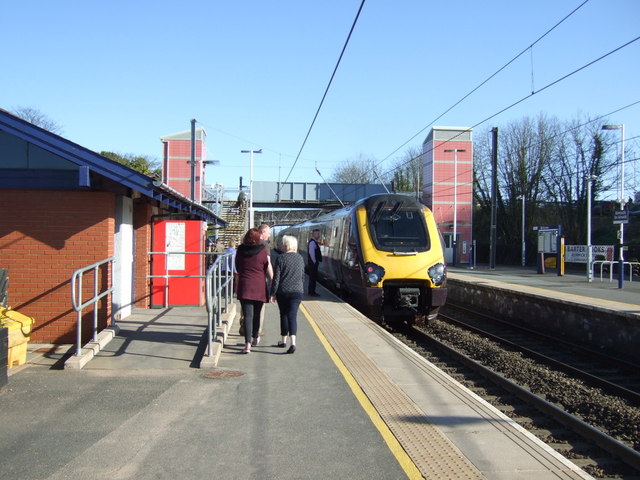
Co-Curate Page
Alnmouth Railway Station
- Overview About Alnmouth Station Map Street View Alnmouth station on the East Coast Main Line is located in Bilton, about a mile west of Alnmouth and just under 3 miles …
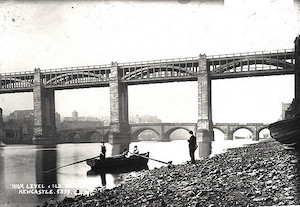
Co-Curate Page
High Level Bridge
- Overview About the High Level Bridge Map Street View The High Level Bridge is a 'double decker' road and railway bridge spanning the River Tyne between Newcastle and Gateshead. The …

Co-Curate Page
George Hudson (1800 - 1871)
- Overview About George Hudson George Hudson (1800 – 1871), know as "The Railway King", was a railway financier and politician from York, who controlled a significant proportion of the railway …
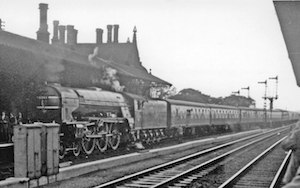
Co-Curate Page
Tweedmouth Station
- Overview About Tweedmouth Station Tweedmouth Station was built for the Newcastle and Berwick Railway and opened on the 29th March 1847. The grand station buildings were designed by Benjamin Green. …
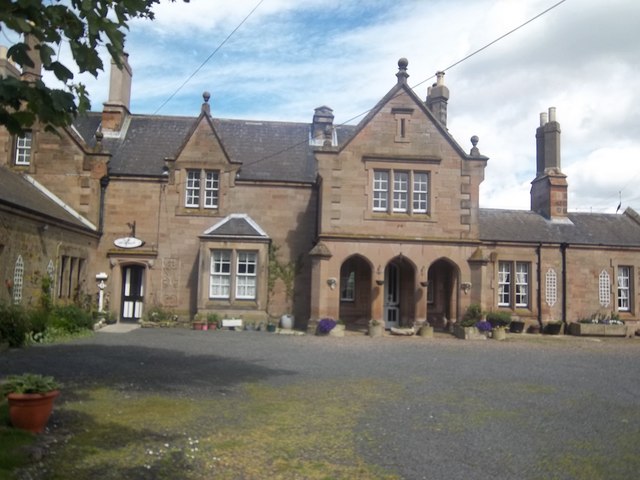
Co-Curate Page
Belford Station (1847 - 1968)
- Overview Map Street View Belford Station closed on the 29th of January 1968. The former station is located just over half a mile east of Belford. It was built in …
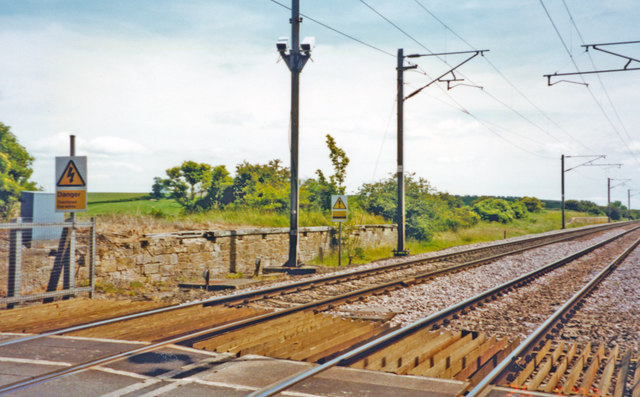
Co-Curate Page
Lucker Railway Station (1847 - 1965)
- Overview About Lucker Station Map Street View A railway station, located about half a mile north of the village of Lucker, was opened in 1847 by the Newcastle and Berwick …
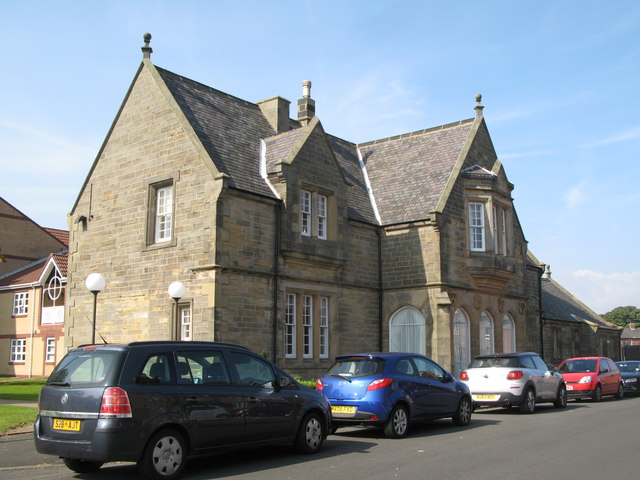
Co-Curate Page
Old Tynemouth Station
- Overview Map Street View The first railway station in Tynemouth was opened on the 20th of March 1847 by the Newcastle and Berwick Railway. The station buildings were designed by …


Co-Curate Page
York, Newcastle and Berwick Railway
- Overview About the YN&BR Railway The York, Newcastle and Berwick Railway (YN&BR) was an English railway company formed in 1847 by the amalgamation of the York and Newcastle Railway …

from https://commons.wikimedia.org…
The Newcastle & Berwick Railway opened in July 1847
- 1847 Source Berwick upon Tweed Record Office c/o Wikimedia Commons
Added by
Simon Cotterill

Co-Curate Page
Alnmouth Railway Station
- Overview About Alnmouth Station Map Street View Alnmouth station on the East Coast Main Line is located in Bilton, about a mile west of Alnmouth and just under 3 miles …

Co-Curate Page
High Level Bridge
- Overview About the High Level Bridge Map Street View The High Level Bridge is a 'double decker' road and railway bridge spanning the River Tyne between Newcastle and Gateshead. The …

Co-Curate Page
George Hudson (1800 - 1871)
- Overview About George Hudson George Hudson (1800 – 1871), know as "The Railway King", was a railway financier and politician from York, who controlled a significant proportion of the railway …

Co-Curate Page
Tweedmouth Station
- Overview About Tweedmouth Station Tweedmouth Station was built for the Newcastle and Berwick Railway and opened on the 29th March 1847. The grand station buildings were designed by Benjamin Green. …

Co-Curate Page
Belford Station (1847 - 1968)
- Overview Map Street View Belford Station closed on the 29th of January 1968. The former station is located just over half a mile east of Belford. It was built in …

Co-Curate Page
Lucker Railway Station (1847 - 1965)
- Overview About Lucker Station Map Street View A railway station, located about half a mile north of the village of Lucker, was opened in 1847 by the Newcastle and Berwick …

